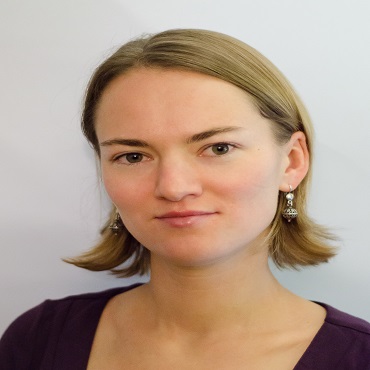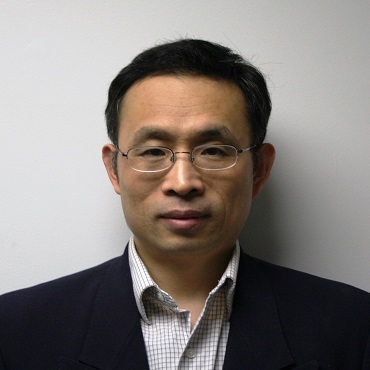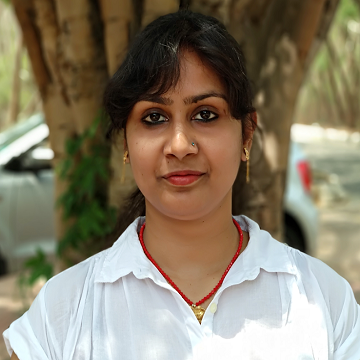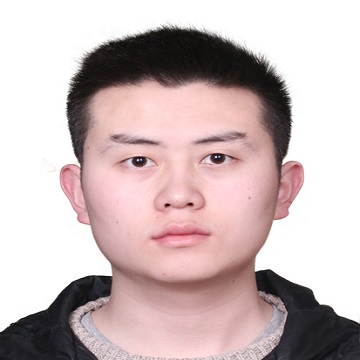Scientific Program
Keynote Session:
Title: Highly stretchable hydrogel sensors
Biography:
Hai-Feng Ji is current a professor of Department of Chemistry, Drexel University. His research interests focus on MEMS devices, hydrogels, nanomaterials for energy and environmental applications, drug discovery, and surface chemistry. He is currently a co-author of over 160 peer-viewed journal articles and book chapters. He has co-authored 6 US patents, two of which have been licenced to companies. He has an H-index of 30. He is an editorial board member of several chemistry journals.
Abstract:
Polyacrylamide hydrogels do not have a good stretchablility, which limited their applications in teh weaable sensor field. In this work, we report the sensing behaviors of our newly developed highly stretchalbe hydrogels.
Title: Electrochemically confined nanopore sensing: from single molecule to single cell
Biography:
Si-Min Lu is a Ph. D. student at East China University of Science and Technology under the supervision of Prof. Yi-Tao Long. She is currently focusing on single entities analysis based on the confined nanopore platform and wearable sensors.
Abstract:
Nanopore represents a unique and versatile sensor to analyze and manipulate single entities. We are aiming to develop a single-entity analysis platform based on the elegant electrochemically confined nanopores. The key ideal is confining the enhanced electric field within the narrow aperture of nanopore to analyze functional and dynamic information of single molecule, single nanoparticle, and single cell. We also built a single molecule sensing interface within the glass nanopore by incorporating the metal film into the inner confined space of glass nanopore to achieve single molecule reaction and single biomolecule sensing. A wireless nanopore electrode based on the metal film coated nanopore was also developed, which poses a possibility to track the electron transfer process in a single cell, and monitor the electrocatalytic process. Furthermore, to address the limitation of conventional nanopore technology, an electrical-optical binding platform was also developed to couple ionic current signal with nano-optical signal. As a result, we successfully achieved aggregation-induced emission (AIE) manipulation in a single cell and single cell manipulation.
Title: Skin-like biosensor system via electrochemical channels for noninvasive blood glucose monitoring
Biography:
Yihao Chen has completed his PhD from Tsinghua University and is now a postdoc from the Center for Flexible Electronics Technology, Tsinghua University. He is also the head of the flexible biosensing lab of Global Research Center for flexible electronics & intelligent technology, Hangzhou. He has published more than 10 SCI papers in reputed journals. 4 patents have been granted.
Abstract:
Currently, noninvasive glucose monitoring is not widely appreciated because of its uncertain measurement accuracy, weak blood glucose correlation, and inability to detect hyperglycemia/hypoglycemia during sleep. We present a strategy to design and fabricate a skin-like biosensor system for noninvasive, in situ, and highly accurate intravascular blood glucose monitoring. The system integrates an ultrathin skin-like biosensor with paper battery–powered electrochemical twin channels (ETCs). The designed subcutaneous ETCs drive intravascular blood glucose out of the vessel and transport it to the skin surface. The ultrathin (~3 mm) nanostructured biosensor, with high sensitivity (130.4 mA/mM), fully absorbs and measures the glucose, owing to its extreme conformability. We conducted in vivo human clinical trials. The noninvasive measurement results for intravascular blood glucose showed a high correlation (>0.9) with clinically measured blood glucose levels. The system opens up new prospects for clinical-grade noninvasive continuous glucose monitoring.
Title: Non- Enzymatic colorimetric sensor for cardiac troponin I (cTnI) based on self-assembly of gold nanorods on heparin
Biography:
Dr. Saji Alex works as an Assistant Professor at the Department of Chemistry, Government College for Women, Thiruvananthapuram, India. He obtained his Ph.D. Degree in Chemistry in 2006 from National Institute of Interdisciplinary Sciences and Technology (CSIR), Thiruvananthapuram (University of Kerala), India. He has done his postdoctoral Studies under the Indo-US, UGC Raman Fellowship-2013 in the Department of Materials Science and Engineering at the University of Utah. His current research interests include development of chemical and biological sensors based on nanostructured materials, and developing organic and inorganic based light harvesting systems.
Abstract:
In this study we present a simple enzyme free colorimetric sensor for the detection of the cardiac marker, Troponin I (cTnI) based on the self-assembly of gold nanorods on heparin. The sensing system consist of a purple solution of cetyl trimethyl ammoniumbromide stabilized gold nano rods (AuNRs) self-assembled in the presence of heparin. Upon the addition of cTnI, the aggregated AuNRs are freely dispersed because of the stronger complex formation between heparin and cTnI, thereby retaining the native wine red colour of AuNRs. As the concentration of cTnI in the solution was increased the colour gradually changes from blue to red there by enabling the sensing of cTnI. The above mechanisms were confirmed by transmission electron microscopy. The AuNRs aggregation was found to be inversely proportional to the concentration of cTnI. The change in absorbance of AuNRs with different concentrations of cTnI was monitored by UV-Visible spectroscopy. Using this sensor system cTnI in the range of 0.5-15 ng/mL could be measured with a detection limit of 0.4 ng/mL. The system also showed good selectivity in the presence of different competing substances under the same experimental conditions. The method offers a simple, cost effective method for the detection and measurement of cTnI devoidng the use of antibodies.
Title: An on off on fluorescence sensor for the detection of tetracycline and levofloxacin antibiotics
Biography:
Smriti Sri is a 4th year Ph.D. scholar. She is working under the guidance of Dr. Pratima Solanki, assistant professor, special centre for nanoscience, Jawaharlal Nehru University, New Delhi, India. Her research work focuses on Nanobio interactions, fabrication of biosensors and optical sensor. She has published some of the good papers in her field.
Abstract:
A switchable optical sensor based on MoS2 quantum dots (MoS2 qds) was developed to determine two commonly used antibiotics in spiked sample of milk via fluorescence quenching of MoS2 qds by tetracycline (off) and recovery by levofloxacin (On). On adding tetracycline to MoS2 qd the fluorescence gets quenched while on adding levofloxacin the fluorescence reappears. The MoS2 qds were prepared hydrothermally and the average particle size was 4.3±0.42 nm as analysed from TEM. The characterization studies were done using UV visible spectroscopy, fluorescence spectroscopy, FTIR, Time Resolved Fluorescence Spectroscopy (TRFS) and AFM. The sensor detected tetracycline in the range 0.05 to 5 mM with LOD of 0.115 mM and levofloxacin in the range 10 μM to 1 mM with LOD of 22.24 µM. The quenching mechanism is dynamic in nature as analysed with variation in decay time from TRFS. The fluorescence quenching efficiency for tetracycline is 95% while the recovery efficiency is 18% for levofloxacin. The proposed sensor was used to analyse spiked samples of water, sewage and milk and found good accordance with the experimental results. The on off on sensor fabricated here can be used as practical fluorescent sensor for tetracycline and levofloxacin detection.
Title: Development of real-time and label-free Immunoassay Chips by Using IGZO(Indium Gallium Zinc Oxide)-TFT(Thin Film Transistor)-based biosensors
Biography:
Dongchen Zhu has completed his bachelor at the age of 22 years from Shanghai Jiaotong University, China and currently he is pursuing master studies from Department of chemical system engineering, Tokyo University, Japan.
Abstract:
Thin film transistor (TFT) technology has been widely utilized in display, but seldomly been used in biosensing in spite of its priority in relatively high electron-mobility, economic-friendly manufacturing and lower energy consumption. Here we immobilized anti-human albumin (anti-HAlb) and examined to directly detect human serum albumin (HSAlb) molecules at the surface of an IGZO (Indium Gallium Zinc Oxide)-TFT array with 400 transistors densely from impedance measurements[]. DC and AC voltages were applied on the neighboring two gates and sources, respectively. After the recognition of HSAlb by anti-HAlb, the output current at 1000Hz increased in a pH 7.4 phosphate buffer solution (PBS) due to changes in electrostatic capacitance and ion mobility at the ITO (Indium Tin Oxide) surfaces as shown in Fig. 1. We also successfully observed the output current response even at the low level of 20 ng/ml for albumin molecules. Furthermore, higher diluted PBS demonstrates larger magnitude of output signals after antibody-antigen reactions, as shown in Fig. 2, probably due to lower ionic strength. The other reason could be pH value of higher diluted PBS is much closer to the isoelectric point of albumin and its antibody, where both of them are approximately of electrical neutrality. In the future, the present IGZO-TFT biosensors are promising for a label-free multiple immunoassay method.
Title: Optimizing dielectrophoresis for circulating tumor cells analysis: influence of suspending medium
Biography:
Dr. Marius Olariu defended his PhD thesis in electrical engineering and is currently associate professor within Technical University of Iasi. His scientific expertise is encompassing materials with functional role in electrical engineering, space charge, dielectrophoresis and broadband dielectric spectroscopy.
Abstract:
Development of new tools for evaluation of metastasis evolution based on separation of circulating tumour cells (CTCs) it is not a new approach and a plethora of studies were reported previously. However, differentiation and confirmation of CTCs from normal cells based on different methods than the immuno-staining ones represents a new goal critical in practical experimentations. Thus, identifying the correlation between the morphology of the CTCs and their electrical properties demonstrated to be a viable alternative solution. Moreover, the experiments performed to date demonstrated that characterization of cancer cells based on their electrical properties obtained with broadband dielectric spectroscopy (BDS) is significantly influenced by the properties of the suspending media.
Using THP-1 cells (human monocytic cell line derived from an acute monocytic leukemia patient) as a model, three sucrose based suspending solutions were tested in DEP and DRS experiments. The measured characteristics highlighted how the suspending medium (buffered/ unbuffered) and its conductivity are influencing cells behaviour in the presence of electrical fields. The results confirmed that LCBs (low conductivity buffers) are the most convenient solutions for running these type of experiments as they have a minimal influence on cancer cell viability as well as on basically experimental operability (e.g. parasitic contribution of electrode polarization on Maxwell-Wagner/interfacial polarization).

Viktoriya Pyeshkova
Institute of Molecular Biology and Genetics of National Academy of Sciences of Ukraine, UkraineTitle: Conductometric enzyme biosensor for determination of heavy metal ions in water solution
Biography:
Viktoriya Pyeshkova defended her PhD thesis in Institute of Molecular Biology and Genetics of NAS of Ukraine (IMBIG) in 2010 in Kiev. Now she is Senior Researcher at IMBIG. Viktoriya is co-author of 32 scientific articles, 3 patents and over 40 communications (oral/poster) in international conferences. She has more than 10 years’ experience in development of biosensors for medical, ecological and food control purposes. In cooperation with colleagues she successfully developed new effective electrochemical biosensors for determination of carbohydrates, ammonium, urea, arginine and toxic compounds.
Abstract:
The detection of toxic compounds is an important issue for environmental remediation and is an integral part of the risk assessment of environmental pollution. This work is devoted to the development and optimization of the enzyme conductometric biosensor for the inhibitory analysis of heavy metal ions in water solution. A pair of planar thin-film interdigitated electrodes (gold and platinum), deposited on a ceramic and glass substrate, were used as a conductometric transducers. The three enzymes (invertase, mutarotase, glucose oxidase) immobilized on the transducer surface were used as a sensitive biological element. The optimal enzyme amount and enzymes ratio in the bioselective membrane were found considering the enzyme activity, biosensor sensitivity to substrate (sucrose and glucose) and heavy metal ions. EDTA and cysteine solutions were used for biosensor reactivation. The measurement conditions were optimized. The optimal time for incubation of biosensor in solution of toxic compounds was 10-30 minutes. The optimal concentration of sucrose for inhibitory analysis was 1.25 mM. The main analytical characteristics of the biosensor (sensitivity to different heavy metal ions, signal reproducibility, selectivity) were studied. The biosensor demonstrated the highest sensitivity toward Ag+ and Hg+2. The biosensor was tested in the work with samples of water contaminated with heavy metal ions. The obtained results showed high correlation with results obtained by standard traditional method of heavy metal ions determination. This biosensor can be used for monitoring of water toxicity.
Keynote Session:
Title: Automated venting technique used in microfluidic digital logic lab-on-a-chip device
Biography:
Manasi Raje is a microfluidics engineer working in Bay Area, California. She is working at Shield Diagnostics and developing diagnostic devices for affordable testing of infectious diseases. She holds training in biomedical engineering and electronics engineering. Manasi has experience in the design and fabrication of a variety of lab-on-a-chip devices. She developed a number of application specific and high-throughput-attempting micro fabrication methods during her time at JBEI that let to a patent. Her microfluidic roots are based in Hui laboratory at UC Irvine where she developed microfluidic digital logic circuits for on chip automation of lab processes which let to multiple publications, presentations and a national award. She is involved in multiple conferences and technical committees in field of microfluidics.
Abstract:
Microfluidic digital logic is an emerging technology which can be useful to automate a variety of lab processes in order to bring lab tests and diagnostics to low resource settings where it can be difficult to establish expensive and advanced labs. Microfluidic digital logic derives its concept from the digital logic in electronics and aids to automate complex liquid handling processes. The basic logic circuits are designed using valves and pneumatic resistors in a way that can be used to pump fluid around in the chip in order to transport the fluid or to mix it or store it. Automation of such basic aspects of a microfluidic device can help to eliminate the wieldy machinery that is required to drive a microfluidic chip. For example the computer program, mechanical/electrical pumps and syringe pumps can be replaced by on-chip pneumatic logic circuits. The heart of this work is a serial dilution circuit which has been previously reported in detail. The logic blocks designed around the dilution ladder do the job of selecting the program, pumping the diluent and making sure all the logic signals are routed correctly without any leakage or impeding attenuation. The circuit that receives and routes all other signals incorporates a feature to check the quality of dilution, the feature is called the venting network. This network uses the logic of its host circuit to vent appropriate valves during the corresponding cycle of dilution in order to avoid leakage and maintain optimal speed of dilution. This work demonstrates engineering of solutions around the challenges associated with large scale integration of complex microfluidic technologies. This technique can prove to be useful for many other challenges involved in design as well as application of microfluidic lab-on-a-chip devices.









